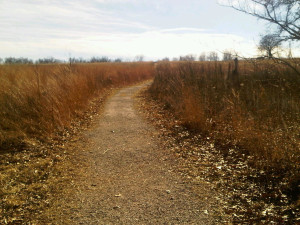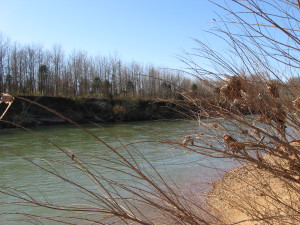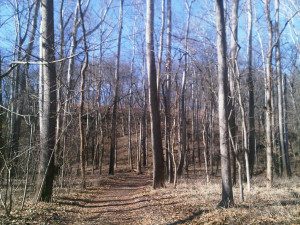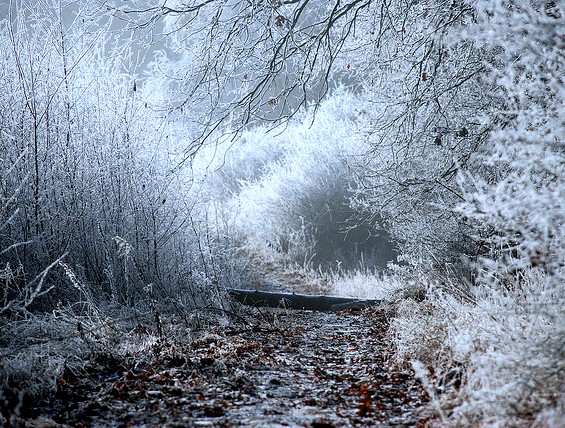I’m reading, or actually rereading, Living in the Nature Poem by Mary Harwell Sayler, and I’m taken by this poem:
Landscape Loved by Wallace Stevens
If you could fly over yards and yards
of green lace lining the Gulf and Space
Coasts, you would see low-lying bands
of land seeding the sea with pockets blue –
beaded with water, and you’d wonder how
one more word could fit into the shell –
shaped pattern, hemmed with canals, and
not unravel beneath the weight of so many
people pushing the delicate fabric, poking
the intricate design, picking at flaws not
found in winter-bound spools of wool.
That landscape is more than familiar; it’s personal. I grew up near the Gulf Coast; I’m familiar with the Space Coast. I’ve flown over area enough to recognize those “low-lying bands of land seeding the sea.” And I know those coastal skies, close cousins to the skies you find in the great Dutch paintings.
Before Stevens, who lived in Connecticut for most of his live, discovered Florida, he fell in love with the landscape of the western North America, specifically the Canadian Rockies and British Columbia. In Can Poetry Save the Earth: A Field Guide to Nature Poems, John Felstiner describes the impact of landscape on the 24-year-old Stevens in 1903, freshly graduated from law school and taking a six-week hunting trip in western Canada: “Besides their campfire, his Canadian journal records two fires burning: ‘One, the moon, lights mountainous camels moving, without bells, to the wide North; another, the twilight, lights the pine tops and the flaring patches of snow.”

Forty miles southwest of St. Louis sits the Shaw Nature Reserve, known to St. Louisans as “the arboretum” (its name until it was changed a few years ago; no one except officials of the Missouri Botanical Garden, which owns and operates it, calls it by its formal name). In 1925, the Garden needed clean air for its collection of orchids, and it found it 40 miles away, purchasing five adjacent farms. Today, the site comprises 2, 400 acres of some of the most diverse landscape you can find – steep hills, river bluffs, wetlands, prairie, wildflowers. Winding their way through the landscape are 14 miles of trails.
So this isn’t “pristine wilderness” so much as it is “managed wilderness.” I’ve walked trails with my family, with my sons and, more often these past few years, by myself. No heavy-duty equipment or preparation is needed; a lunch in a backpack is more than sufficient.


It is a fine place to read Stevens’ Sunday Morning, an eight-stanza poem published in 1915 as part of his first collection, Harmonium. This is from the concluding stanza:
We live in an old chaos of the sun,
Or old dependency of day and night,
Or island solitude, unsponsored, free,
Of that wide water, inescapable.
Deer walk upon our mountains, and the quail
Whistle about us their spontaneous cries;
Sweet berries ripen in the wilderness;
And, in the isolation of the sky,
At evening, casual flocks of pigeons make
Ambiguous undulations as they sink,
Downward to darkness, on extended wings.
The silence and solitude of the landscape is its own poetry, a renewal.
Photo by jazonz, Creative Commons, via Flickr. Post by Glynn Young, author of the novels Dancing Priest and A Light Shining, and Poetry at Work.
Want to brighten your morning coffee?
Subscribe to Every Day Poems and find some beauty in your inbox.
- Longfellow’s “Paul Revere’s Ride”: Creating a National Legend - April 17, 2025
- Poets and Poems: Katie Kalisz and “Flu Season” - April 15, 2025
- Poets and Poems: Michelle Ortega and “When You Ask Me, Why Paris?” - April 10, 2025


Mary Sayler says
Oh, wow, Glynn. I came to this post because I always enjoy your take on things, and I love Steven’s poetry. What a joy and honor to see my poem at the top of the page! Thank you for that encouragement and for your word to other poets and writers too.
When you said “I came for the silence, the absolute poetry of the silence,” you beautifully expressed how poems often come when we’re quiet enough to hear. I pray others hear what you say in this post and in the highlight on the Christian Poets & Writers blog – http://christianpoetsandwriters.blogspot.com.
God bless.
Glynn says
Mary – and thanks to you for all your encouragement of poets!
Monica Kaye Snyder says
This reminds me of Jesus. How he often had to separate himself from the crowd to pray. This reminds me of why I need to always make space in my life to be alone in nature . . . to be okay. This reminds me of dear Mary Oliver’s poem titled “Landscape.”
Isn’t it plain the sheets of moss, except that
they have no tongues, could lecture
all day if they wanted about
spiritual patience? Isn’t it clear
the black oaks along the path are standing
as though they were the most fragile of flowers?
Every morning I walk like this around
the pond, thinking: if the doors of my heart
ever close, I am as good as dead.
Every morning, so far, I’m alive. And now
the crows break off from the rest of the darkness
and burst up into the sky—as though
all night they had thought of what they would like
their lives to be, and imagined
their strong, thick wings.
Glynn says
Monica – thanks for the reading, and the comment. And the Oliver poem, too!
Monica Sharman says
“That landscape is more than familiar; it’s personal.” Wow, to have a poem like that. I’d love to read a poem written just like this, except for South Bay, Los Angeles. What a great project it would be for poets all over the country to write local poems and compile them into a sort of “poetry atlas” or “poetry tour guide.”
Glynn says
Monica – that’s a great idea: “The Poetry of Geography.” Thanks for reading the post.